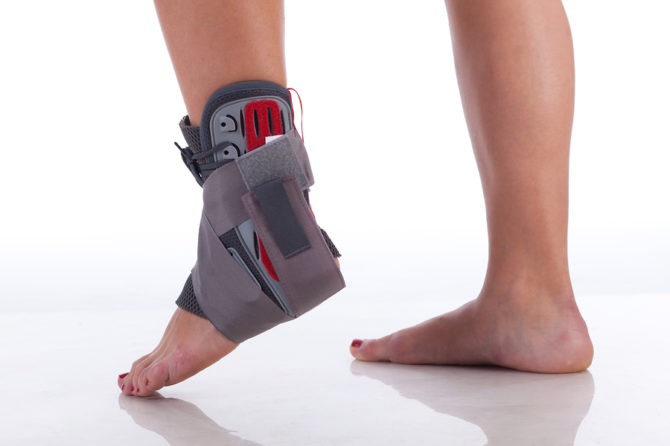
“Bracing News” – Ankle Instability and Bracing Trends
One of the most commonly undertreated conditions in the field of podiatry is ankle sprains. Given the long term issues associated with ankle sprains and long term instability (or “weak” ankles), you should pay a little more attention when sprains happen.
Not everyone who sprains an ankle has ankles that are weak. Yet, about 20% percent of ankle sprains that go untreated or undertreated will have chronic instability. Someone with instability may not have chronic pain, but it will almost always show up once painful arthritis develops, or if you tear a tendon. When you sprain an ankle or have ankles that are chronically unstable, it causes slow but long-term damage to the joint cartilage. It also puts a great deal of strain on the peroneal tendons, which run along the outer leg and ankle.
Today, podiatrists are focusing more on the chronic issues associated with ankle instability. There are several ways we address this, including a good, deep-seated orthotic in your shoes or an orthotic with attached bracing that stabilizes around the ankle.
Athletes with a history of chronic sprains should consider bracing during sports that require a lot of side-to-side movement (basketball, tennis, and soccer, to name a few). This is very effective for sprain prevention, and studies show it does not affect physical performance.
There are several types of ankle braces, ranging from pull-on sleeves to lace-up options. The degree of bracing depends on the level of instability, the overall patient health, and the frequency of sprains. Most braces should have a figure-8 type of wrap, which allows for compression and stability all the way around your ankle.
At the FAAWC, we have many types and levels of braces for everyone from the serious athlete to the casual weekend exerciser. We can also provide custom bracing options. Call or visit the FAAWC today to explore our options and find the right brace to prevent ankle sprains and ankle instability.
Leave a reply